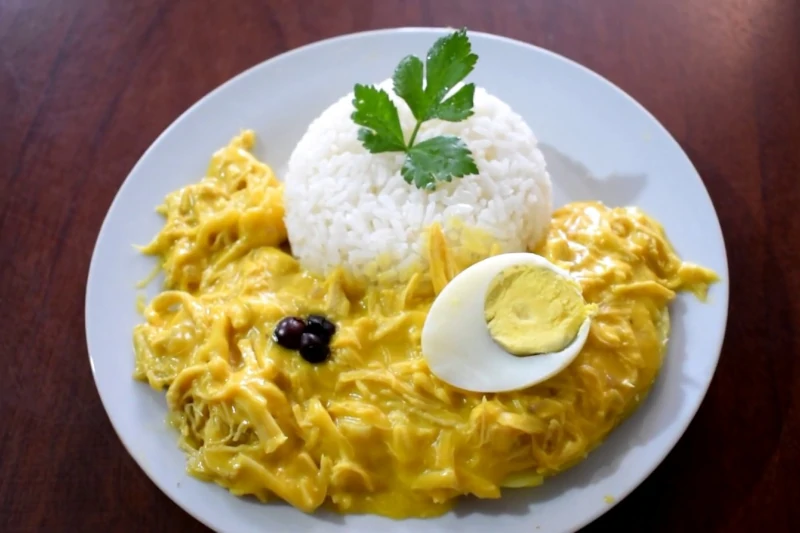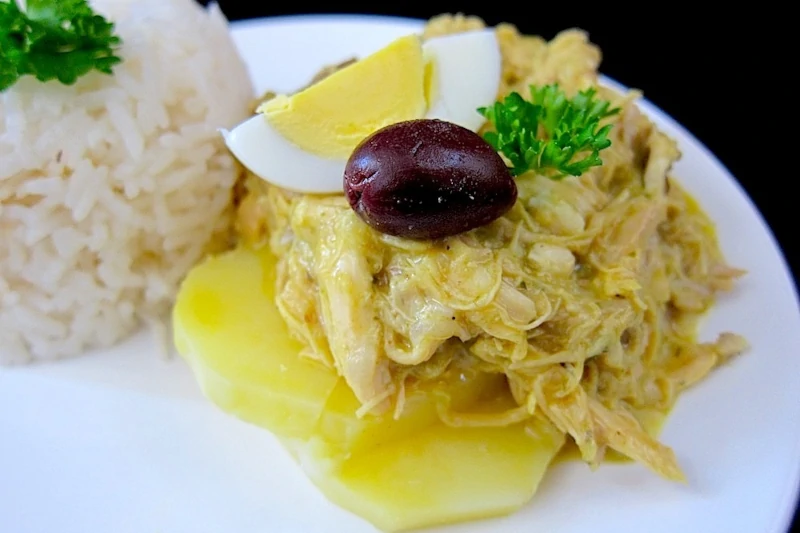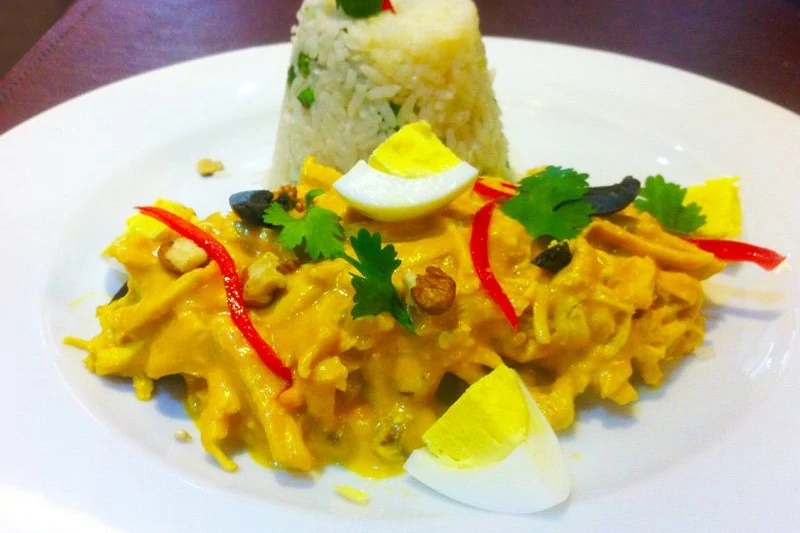Welcome to the world of Peruvian cuisine, where rich flavors, spices, and cultural influences collide to create a culinary experience like no other. Today, we invite you to embark on a gastronomic journey through the heart of Peru by exploring one of its most beloved and cherished dishes: Aji de Gallina. This classic Peruvian chicken stew, with its creamy, spicy, and slightly nutty notes, has been warming hearts and satisfying palates for centuries.
In this article, we will delve into the history, preparation, and cultural significance of Aji de Gallina, revealing how this seemingly simple stew has transcended borders and established itself as a staple of Peruvian cuisine. So, put on your aprons and grab your spoons, as we take you on an adventure to discover the secrets behind this iconic dish.
Essential ingredients that define the texture and flavor of the Aji de Gallina
Aji de Gallina is a delightful fusion of flavors, achieved by combining a selection of essential ingredients. Each component plays a crucial role in defining the dish’s unique taste and texture.
The star of the show is Aji Amarillo, a Peruvian yellow chili pepper. It imparts a fruity, spicy kick that sets Aji de Gallina apart from other stews. This pepper is widely used in Peruvian cuisine. Ají Amarillo is also a key ingredient of Salsa Huancaína, another traditional Peruvian dish.
Tender, shredded chicken is the main protein in this dish. Traditionally, a whole chicken is cooked in a flavorful broth, then shredded and added to the sauce. Using different chicken cuts ensures a succulent result every time.
Additionally, walnuts or pecans are a vital ingredient, adding a rich, nutty flavor and creamy consistency to the dish. Ground or finely chopped, these nuts create a thick sauce that embraces the chicken in a velvety blanket.
Another key component is bread soaked in milk or broth. This helps thicken the sauce and contributes to the creamy texture. It’s essential to use crustless, day-old bread for optimal results. Also, cheese, specifically queso fresco or queso blanco, is added to enhance the creaminess of Aji de Gallina. These fresh, mild cheeses melt effortlessly into the sauce, creating a silky-smooth finish.
Onions and garlic are the aromatic base for the stew. Sautéed until golden, they provide a depth of flavor that perfectly complements the other ingredients. Additionally, eggs and olives make for a colorful garnish. Hard-boiled eggs, sliced or quartered, and pitted black olives add an extra layer of flavor and visual appeal to the dish. Finally, Aji de Gallina is typically served over rice or boiled potatoes.

Origins and cultural influences of this traditional Peruvian dish
The rich history of Aji de Gallina can be traced back to the cultural melting pot that has shaped Peruvian cuisine. To fully understand its origins, one must explore the tapestry of influences that led to its creation.
Peru’s culinary landscape has been impacted by various cultures throughout history, from indigenous peoples to Spanish conquistadors and African, Chinese, and Japanese immigrants. Thus, each wave brought its own unique flavors, techniques, and ingredients.
Aji de Gallina’s roots are thought to lie in Spain, where similar stews or fricassees were prepared with chicken and nuts. Thus, Spanish settlers introduced these dishes to the Americas, where they were adapted using local ingredients.
One significant influence on Aji de Gallina was the arrival of African slaves. They introduced the technique of slow-cooking meat in flavorful sauces, which contributed to the tender, succulent texture of the dish.
The use of Aji Amarillo, the iconic yellow chili pepper, is undeniably indigenous to Peru. This crucial ingredient gives Aji de Gallina its characteristic spice and sets it apart from European versions.
Chinese immigrants also left their mark on Peruvian cuisine, with their preference for rice as a staple food. Today, Aji de Gallina is often served over a bed of steamed rice, showcasing this cultural influence.
Additionally, the Japanese community in Peru played a role in shaping the dish as well. Their emphasis on fresh, high-quality ingredients helped elevate Aji de Gallina to a gourmet status in contemporary Peruvian cuisine.
Aji de Gallina has evolved over time, with regional variations emerging across the country. Some recipes feature added vegetables, while others omit the nuts or cheese, showcasing local preferences and availability.

How to present and complement this Peruvian chicken stew
When it comes to serving and pairing Aji de Gallina, presentation and complementary dishes are crucial in creating a well-rounded dining experience. Let’s explore some ideas to elevate your Peruvian chicken stew.
A traditional way to serve Aji de Gallina is over a bed of steamed white rice or boiled potatoes. This allows the dish’s vibrant colors and flavors to stand out while providing a satisfying, filling base. Garnishing is key to enhancing the visual appeal and adding extra flavor. Arrange sliced hard-boiled eggs and pitted black olives around the stew for a beautiful contrast and an additional layer of taste.
For a splash of green, consider adding steamed or sautéed vegetables like green beans or asparagus. Not only do they provide a pop of color, but they also add a fresh, nutritious element to the meal.
If you’re a fan of spicy food, offer Aji Amarillo paste or pepper sauce on the side. This allows guests to customize their desired heat level and experience the authentic flavors of Peruvian cuisine.
When selecting appetizers, a popular choice is ceviche, Peru’s national dish. The combination of tangy, citrus-marinated seafood and creamy Aji de Gallina creates a harmonious balance of flavors and textures.
A refreshing salad is another excellent pairing option. A simple mix of lettuce, tomatoes, cucumbers, and avocado, dressed in a light vinaigrette, can cleanse the palate between bites of the rich stew.
To accompany your Aji de Gallina, consider serving a classic Peruvian drink like the pisco sour. This zesty, frothy cocktail is made from pisco, lime juice, simple syrup, egg white, and bitters, offering a delightful contrast to the hearty meal.




